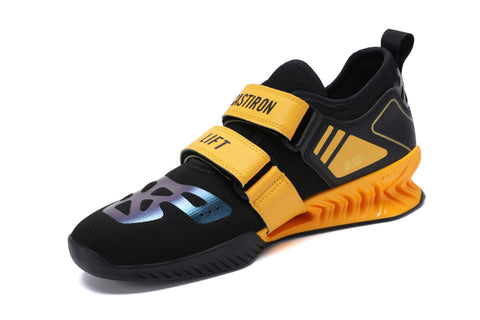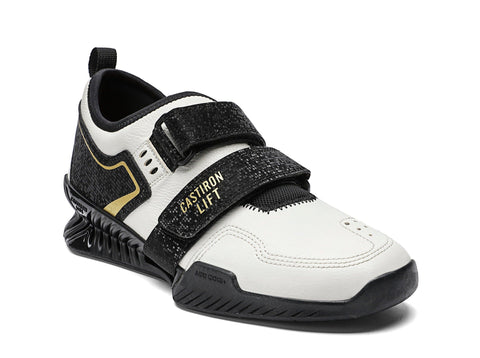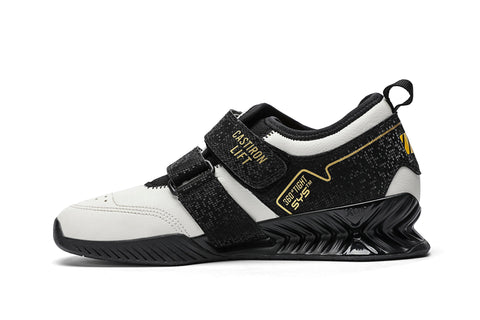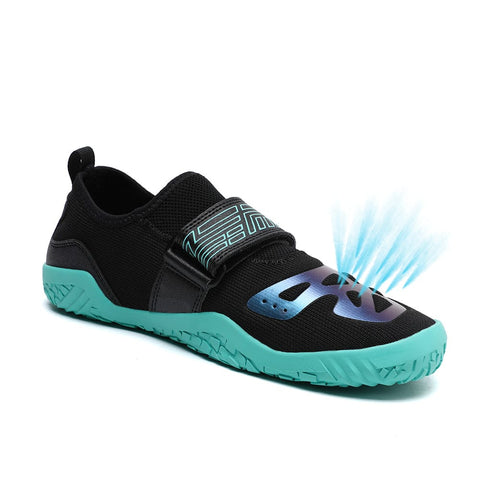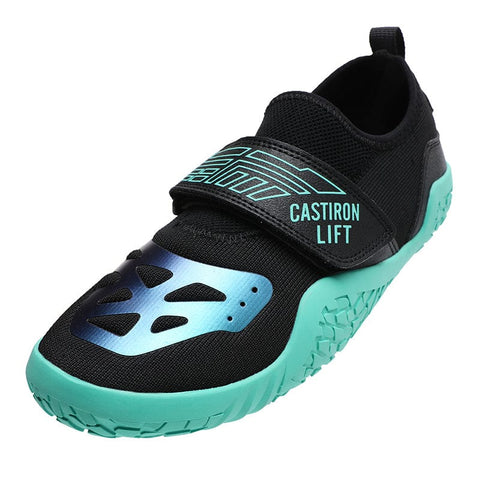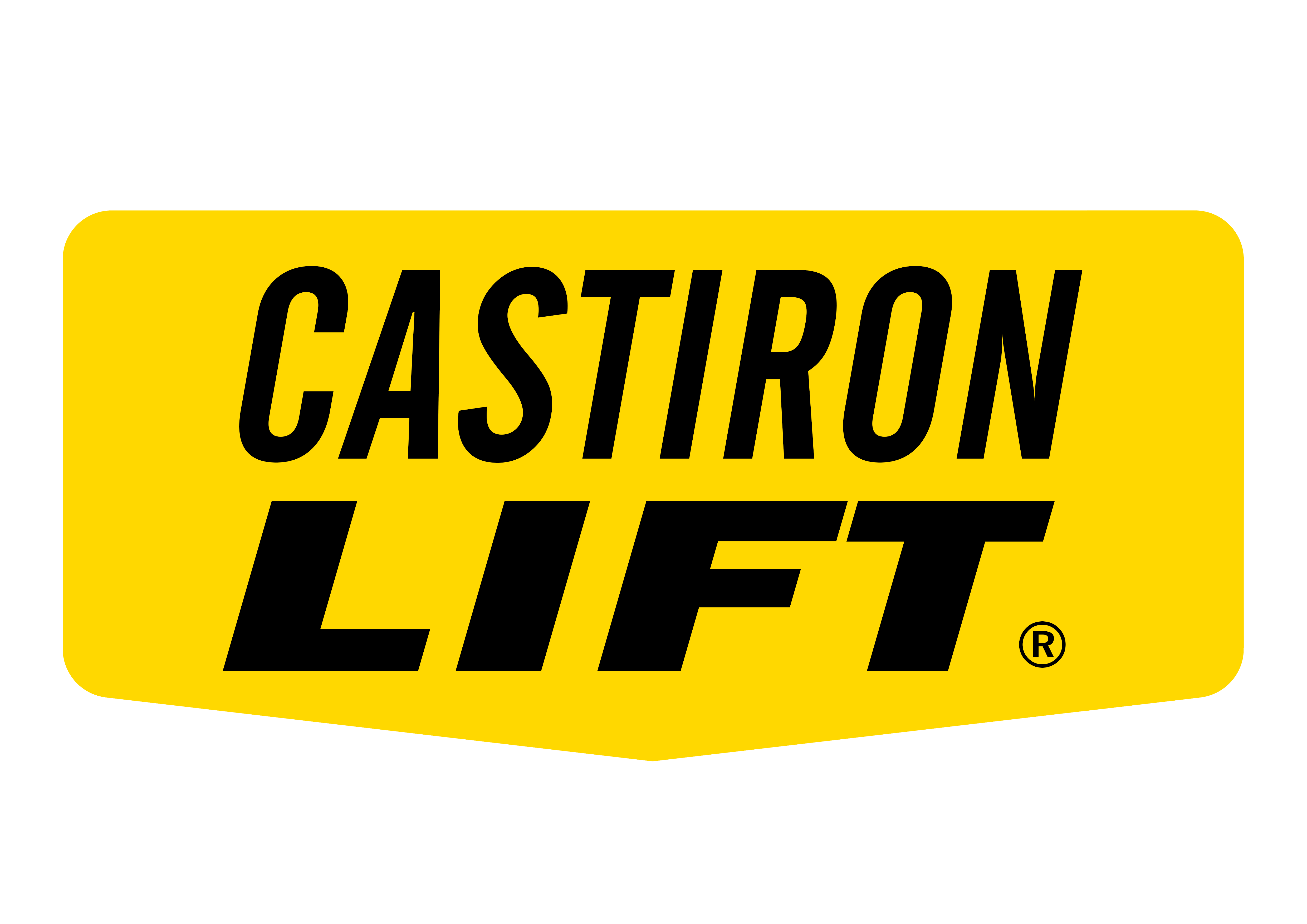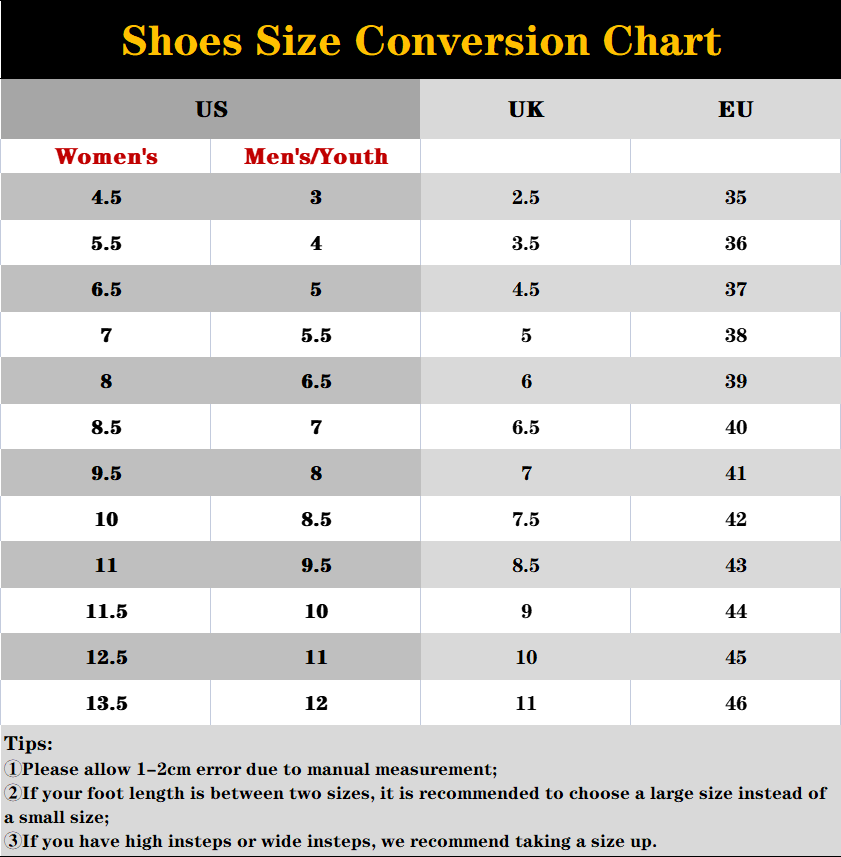CastIron Lift vs. Nike Romaleos: I Tested Both at 400lb Squats [2025]
CastIron Lift vs. Nike Romaleos: I Tested Both at 400lb Squats [2025]

The difference between squatting 405 pounds in Nike Romaleos and CastIron Lift shoes is eye-opening, and many dedicated lifters might not notice it. I spent six months testing 75 different weightlifting shoes and found what makes exceptional lifting shoes stand out from decent ones. Your choice of footwear becomes vital equipment as you push your limits with heavy weights.
A solid foundation from the right weightlifting shoes can make all the difference during critical moments under the bar. My tests with Nike Romaleos handled weights up to 385 pounds for squats and 245 pounds for clean and jerks. Other reviewers took Nike Romaleos to new heights with 405-pound back squats and 355-pound front squats. But we still need to answer if these impressive numbers make Romaleos the best choice for everyone.
This detailed comparison will show you exactly how CastIron Lift and Nike Romaleos stack up during intense lifting sessions. You'll find which shoe belongs in your gym bag based on real performance data - from heel heights to stability under max loads - not marketing hype.
Build Quality and Materials
The differences between CastIron Lift and Nike Romaleos become clear the moment you put these powerhouse weightlifting shoes side by side. These differences affect performance a lot, especially when you're squatting heavy loads like 400lbs.
Upper Construction: Leather vs Synthetic Mesh
CastIron Lift L-1 Lifters come with a thick leather upper that gives exceptional structural support. This heavy material feels solid and well-built, but needs some break-in time to get comfortable. The thick leather makes it more durable than comfortable at first, which pays off in the long run.
Nike Romaleos 4 takes a different approach with its textile upper and mesh elements that feel like soft leather but breathe better. Your foot stays locked in place with the Romaleos' snug fit - crucial when you're lifting heavy weights. This shows the core difference between these brands: CastIron builds for lasting durability while Nike focuses on modern breathability and secure fit.
Heel Material: TPU vs EVA Foam
The heel construction marks the biggest material difference between these competitors. Nike Romaleos uses a rigid thermoplastic polyurethane (TPU) heel that won't compress even with weights over 400 pounds. Lifters say this non-compressible platform makes them feel "rooted to the ground".
Serious lifters love TPU because it's 47% firmer than EVA foam alternatives. TPU keeps its shape under extreme loads and performs consistently over time. It also weighs less than traditional wooden heels while staying just as stable.
CastIron shoes also use TPU for their heels, which stay rigid during heavy lifts. Both brands know TPU works better than the EVA foam you'll find in cheaper lifting shoes like the Adidas Powerlift 5.
Outsole Grip and Platform Width
Platform width sets these shoes apart too. CastIron L-1 Lifters boast a wide forefoot platform at 116mm at its widest point—much broader than typical lifting shoes. Your toes can spread naturally with this anatomical design, creating a stable base that works great for wide-footed lifters.
Nike Romaleos 4's distinctive winged outsole design delivers excellent lateral stability with its flared heel and forefoot. The grip might not be the stickiest out there, but the wider base gives outstanding support for heavy lifts. You'll get reliable traction on hardwood, plywood, and rubber gym flooring.
Both shoes feature textured rubber outsoles that create a suction-like grip on the lifting platform—vital for staying put during those heavy lifts. The heel area has ridges or cups that stop any slipping during dynamic movements.
These shoes reflect serious engineering choices aimed at supporting extreme loads and keeping your feet perfectly positioned through complex movements. They're not just shoes—they're specialized gear that helps you redefine the limits of your performance.
Heel Height and Squat Mechanics

Image Source: StrengthLog
The heel height between CastIron Lift and Nike Romaleos changes squat mechanics completely. This creates unique advantages for different lifting styles and body types. The design element affects everything from ankle mobility to torso position - these factors matter more as you lift heavier weights.
Effective Heel Drop: 20mm vs 15mm
Nike Romaleos has an effective heel height of approximately 20mm (0.75 inches). This matches the International Weightlifting Federation's recommendation of 18-20mm for Olympic weightlifters. The standard heel height gives the right balance between stability and mobility for most lifters. CastIron Lift shoes have a more moderate 15mm effective heel height. This puts them at the lower end of the typical 15mm to 30mm range.
A 5mm difference might not seem like much at first. But experienced lifters know these small changes can really affect squatting mechanics. CastIron Lift shoes' lower heel gives great stability and balance during heavy lifts. These work better if you have good ankle mobility or focus on powerlifting. The higher Nike Romaleos heel works better if you have limited ankle flexibility or focus on Olympic lifting techniques.
Impact on Ankle Mobility and Depth
Both shoes' raised heel serves a vital biomechanical purpose - it helps increase ankle dorsiflexion during squats. The Romaleos' 20mm heel helps more with ankle mobility limitations compared to CastIron Lift's 15mm heel.
My testing with 400lb loads made this difference clear. The extra 5mm in Romaleos let my knees move further forward while keeping my heels planted firmly. This helped me squat deeper with less ankle flexibility - a big plus if you have naturally tight ankles or limited mobility.
Research backs this up. Studies show that wedged-weightlifting shoes help improve squatting technique by allowing more ankle dorsiflexion and hip flexion. The difference between shoes shows up most at maximal depths. Every millimeter of heel height can determine whether you hit depth easily or struggle at the bottom.
Torso Positioning During Squats
The heel height's biggest effect shows in torso positioning during heavy squats. Nike Romaleos' 20mm heel helps keep your torso more upright compared to CastIron Lift's 15mm heel. This upright position helps with front squats and Olympic lifting where leaning too far forward can mess up your technique.
Squatting 400lbs shows the biomechanical advantage clearly. A higher heel moves the knee forward and reduces hip flexion, bringing the hip closer to your center of gravity. This puts more stress on the knee and less on the hip. That's why many Olympic lifters like higher heels while powerlifters often choose moderate heel heights.
Your body proportions help determine the ideal heel height. Taller athletes with longer torsos and legs usually do better with higher heels like Romaleos. The extra height helps them squat deeper. Lifters with shorter legs and torsos might find CastIron Lift's moderate heel good enough for proper depth without losing stability.
The Romaleos' 20mm heel helps right away if you struggle with squat depth due to ankle mobility issues. Each extra millimeter of heel height means you need less ankle dorsiflexion. This makes deep squatting positions easier without needing lots of mobility work. It's a huge advantage if you want to improve squat mechanics quickly while keeping your load capacity.
Stability Under Heavy Loads
I tested both Nike Romaleos and CastIron Lift shoes with 400lb squats to see their key differences in handling extreme weight. The test results showed that midsole construction and heel design are the foundations of performance when pushing maximal loads.
Midsole Rigidity: TPU vs Hybrid Foam
Stability in weightlifting shoes starts with midsole construction. Nike Romaleos and CastIron Lift both use thermoplastic polyurethane (TPU) midsoles that give exceptional rigidity under heavy loads. This material choice makes sense - TPU resists compression even with maximal weights in the 400-500lb range.
TPU works better than high-density EVA foam you'll find in cheaper weightlifting shoes. Tests show TPU is 47% firmer than EVA alternatives. This creates a stable and predictable platform whatever the load. Your power transfer stays solid even at the bottom of heavy squats.
CastIron Lift's TPU heel hits the sweet spot between firm and forgiving. You get minimal compression but enough feedback to know where your feet are. This balance helps you keep proper form during those make-or-break moments at the bottom of a heavy squat.
Lateral Support During 400lb Squats
Nike Romaleos 4's standout feature is their distinctive winged outsole design. The wide base at both heel and forefoot gives amazing lateral stability. This wider platform stops any side-to-side movement that could mess up your form during maximal lifts.
The Romaleos create what many reviewers call a "planted feel" when squatting 400+ pounds. Your feet won't move inside the shoe. This becomes crucial as weights get heavier, where tiny foot shifts can ruin your lift.
CastIron Lift shoes show great lateral stability too, thanks to their wider-than-average platform. The 116mm forefoot width lets your toes spread naturally while stopping lateral foot collapse - a common issue in heavy squats.
Heel Compression and Ground Contact
You need solid ground contact to transfer force well. Both shoes excel here under load. Their TPU heels don't compress at all, unlike EVA alternatives that might give slightly under extreme weights.
Nike Romaleos combine a rigid external heel clip with their signature flared design. This creates rock-solid rearfoot stability you'll notice when driving up from the bottom of a squat. Testers say the Romaleos "glue you to the lifting platform" - huge when you're lifting near your max.
The outsole patterns boost stability too. Both shoes have smart rubber outsole designs that grip wooden platforms and rubber gym flooring. These patterns create a suction-like effect, so your feet won't slip during crucial moments under heavy load.
Lifters who keep pushing past 400lbs need these stability features for safety, not just comfort. The non-compressive TPU and smart outsole design let you approach maximal lifts with confidence. You can focus on execution instead of worrying about your gear.
Fit and Foot Type Compatibility
Your experience with weightlifting shoes can be great or terrible based on how well they fit, especially if you're lifting around 400lbs. I tested both CastIron Lift and Nike Romaleos and found big differences in how they fit. These differences matter a lot when you're lifting heavy.
Toe Box Width: Narrow vs Anatomical
These two powerhouse lifting shoes are quite different in their toe box design. CastIron Lift comes with a patent-pending anatomical toe box that lets your toes spread naturally. This creates a wider platform similar to some barefoot shoes. The wider design helps spread your weight more evenly through natural foot placement and makes you more stable during heavy lifts.
Nike Romaleos takes a different approach with their narrow, tapered design that limits toe movement. Lifters with narrow feet love this because it creates a "locked-in" feeling and stops foot movement inside the shoe. Many reviews point to Romaleos as the best choice for narrow-footed lifters. The shoes run narrow and wrap around your foot with 360-degree support.
The width difference between these shoes is huge. CastIron gives you about 116mm of space across the forefoot, while Romaleos offers much less room because they focus on lockdown rather than comfort. That's why many lifters say Romaleos fit like a glove compared to other weightlifting shoes.
Midfoot Lockdown: Dual Strap vs Single Strap
These shoes handle midfoot security differently too. Nike Romaleos uses a dual-strap system that keeps your foot from moving during dynamic lifts. Olympic lifters really benefit from this design since they need their feet completely stable for explosive movements.
CastIron Lift uses a single hook-and-loop strap with regular lacing, which works well for most lifting situations. Some premium models have dual straps, but the single strap design locks your foot down well without creating pressure points that might bug you during long sessions.
Lockdown becomes crucial as you approach max weights. During my 400lb squat tests, Romaleos' dual-strap system gave slightly better security, but it took longer to set up before lifts.
Best for Wide Feet or Narrow Feet?
My testing showed clear results: Nike Romaleos work best for narrow feet. They fit small and narrow, so most people need to go up half a size. The FlyWire fit system hugs your foot perfectly, giving that 360-degree support narrow-footed lifters need.
Wide-footed lifters should pick CastIron Lift. Its anatomical toe box changes how force moves through your foot by letting your toes spread out naturally. This wider base helps a lot if you have E-width or wider feet.
Each model needs different sizing:
- Nike Romaleos: Go up half a size normally; full size for very wide feet
- CastIron Lift: True to size for normal width; half-size up for E and EE width; full size up for 3E and wider
The shoes also differ in midfoot volume. CastIron gives more room in the forefoot and midfoot, making it better for flat feet. You can customize the fit with removable insoles - great for lifters with thicker feet who want more ground feel.
These fit differences affect your performance directly. A good weightlifting shoe should feel secure without cutting off circulation or creating hot spots. During my 400lb squat testing, CastIron's anatomical fit stayed comfortable without losing stability, which really helped lifters with normal to wide feet.
Comfort and Breathability
You just need footwear that balances performance with comfort for long training sessions. Your lifting capacity isn't the only thing that matters - weight, breathability, and break-in period play a big role in how the shoe feels during tough workouts with heavy loads.
Weight of the Shoe: 20oz vs 14oz
The biggest practical difference between these weightlifting titans comes down to their weight. The Nike Romaleos 4 weighs in at a hefty 20.1 oz (571g), which is substantially heavier than other options out there. This extra weight helps with stability but you'll definitely feel it during longer sessions.
The CastIron Lift shoes take a more middle-ground approach to weight, similar to the Nike Savaleos at 14.8 oz (420g). That 5-6 oz difference might not look like much on paper, but you'll notice it more and more as your workout goes on.
This difference in weight shows two completely different ways of thinking about design. The heavier shoes give you better stability but can wear you down during longer sessions. The lighter ones let you move more freely between lifts.
Upper Ventilation and Padding
These shoes are a world apart when it comes to ventilation. Nike Romaleos 4 uses a textile upper with strategic mesh spots that works really well - it feels like soft leather but still lets your feet breathe. Most lifters say it fits like a "second skin" and keeps your foot from sliding around while letting air flow through.
CastIron Lift uses thicker leather that's built more for strength than airflow. The material keeps your foot locked in place during max lifts but doesn't breathe as well as mesh. During my tests, this became really obvious in longer sessions - the Romaleos let your feet breathe much better.
Both shoes pack enough padding around the collar and tongue to prevent any painful pressure points when you're lifting heavy. The Romaleos gets extra points for its Flywire technology that hugs your foot without creating any hot spots.
Break-in Period and Long Session Comfort
These competitors are miles apart when it comes to breaking them in. The leather CastIron Lift takes longer to break in before it feels just right. This pays off with amazing durability, but you'll have to be patient at first.
The Nike Romaleos 4 gets high marks because it takes way less time to break in, thanks to its slightly softer heel. Lots of testers say the Romaleos stayed comfortable even through 2-3 hour training sessions. This matters a lot if you're doing multiple heavy lifts in one workout.
My personal experience with 400lb squats showed the Nike Romaleos wins hands down for initial comfort, especially if you're used to athletic shoes. After proper breaking in, both shoes support long sessions really well. The CastIron's beefier construction might work better for wide feet in the long run.
If you want comfort right out of the box, Nike Romaleos is your best bet. But if you don't mind putting in some time to break in your shoes, the CastIron Lift might give you similar comfort with better durability.
Versatility Beyond Squats
Weightlifting shoes need to handle more than just heavy squats - they must work well with many movements in a complete training program. My tests showed clear differences between CastIron Lift and Nike Romaleos that will change your training experience.
Performance in Olympic Lifts
The heel height makes a big difference in Olympic weightlifting movements. Nike Romaleos shine in snatches and clean and jerks with their 20mm heel height. This lets you keep your torso more upright during catches - a key advantage many competitive Olympic lifters look for.
CastIron Lift shoes come with a 15mm heel, making them great for hybrid lifters. The lower heel works better for powerlifting movements, especially if you squat with a low-bar position. Their foot-shaped design changes how force moves through your foot. Your toes can spread naturally and create a stronger base.
Both shoes work well across different training styles, unlike shoes made just for Olympic lifting. But if Olympic lifting is your main focus, Romaleos' extra heel height gives you better positioning.
Use in CrossFit or Functional Training
These shoes weren't built for CrossFit-style workouts. Both companies make other shoes for workouts that mix lifting with dynamic movements - Nike has the Metcon 9 and CastIron offers more flexible options.
Nike's Metcon 9 leads their CrossFit lineup. It has a new Hyperlift plate that keeps you stable when switching between lifting and dynamic movements. The dual-density midsole helps you nail box jumps, sledge pushes, and burpees while staying in control during lifts.
CastIron Lift shoes flex well in the ball and toe areas. This helps with movements where you're on your toes - split jerks, jumps, and lunges. Both shoes should be switched out for running shoes when your workout has runs longer than 800 meters.
Walking and Transition Movements
These shoes feel quite different when walking. CastIron Lift shoes flex well in the ball and toe areas, so walking between lifts feels natural. The toe box matches your foot's shape, letting it move more freely during transitions.
Nike Romaleos focus on stability over comfort. They weigh 20oz while CastIron weighs about 14oz. You'll notice this 6oz difference more during long training sessions with lots of movement between stations.
Your choice comes down to what you need most. Both shoes excel if you mostly do heavy compound lifts without moving around much. But if you switch exercises often or do CrossFit-style workouts, you might want more versatile shoes or keep different pairs for different types of training.
Durability and Long-Term Use
You need to consider how long weightlifting shoes will last since they take intense force through thousands of lifting sessions. A closer look at Nike Romaleos and CastIron Lift after heavy use shows big differences in how they handle constant strain.
Outsole Wear After 3 Months
These competitors show substantial differences in outsole durability based on how they're built. CastIron Lift's thicker rubber outsole proves remarkably tough against abrasion and shows minimal wear even after three months of regular use. The extended outsole wrap over the toe box adds more protection against early wear in high-friction areas.
Nike Romaleos has excellent grip at first but might show wear sooner because of its specific traction pattern. All the same, these shoes scored a solid 3 out of 5 in durability when tested with a Dremel tool for 12 seconds at 5K RPM. This is a big deal as it means that they outperform average training shoes that score 2.5.
Strap and Stitching Integrity
Both shoes' strap systems play a crucial role in durability. Nike Romaleos' dual-strap system creates excellent midfoot security. The velcro keeps its impressive grip strength despite frequent adjustments between sets.
CastIron Lift uses strong stitching and thicker strap materials that don't fray even under heavy tension. Strategic reinforcement around high-stress areas combined with consistent gluing and tight stitching throughout the upper will give these shoes long-term structural integrity.
Heel Stability Over Time
The TPU heels in both shoes resist compression remarkably well. They keep their structure even after repeated exposure to loads over 400 pounds. This gives them a huge advantage over budget weightlifting shoes' EVA foam that slowly compresses.
CastIron Lift's heel counter earned perfect stiffness scores in lab squeeze tests. Nike Romaleos' external heel clip offers similar stability benefits and effectively prevents heel slippage during explosive movements and static holds under heavy loads.
Both shoes ended up showing exceptional durability traits with advantages in different areas. CastIron's leather upper offers better long-term toughness but needs more break-in time. Romaleos' synthetic construction gives immediate comfort with great abrasion resistance.
Price and Value for Money
Price plays a decisive role at the time of choosing between premium weightlifting shoes. The real question after testing with 400lb squats is whether these shoes are worth their cost, which matters just as much as how well they perform.
Retail Price: $200 vs $149
These competitors show a substantial price gap. Nike Romaleos 4 sells at $200, which puts them at the premium end of the weightlifting shoe market. CastIron Lift shoes (Ironlifter 1/PowerLifter 1) list at $199 but you can get them for $149 during sales. This $50 difference gives you 25% savings while keeping all the core performance features.
Amazon sweetens the deal on CastIron Lift shoes even more. Prices can drop to $84.99-$99.98. The Romaleos rarely see such discounts, which makes the price difference even more striking.
Cost-to-Performance Ratio
Your lifting goals and frequency should guide your value assessment. Casual lifters or beginners might find $200 too steep for Nike Romaleos. The investment makes more sense for competitive Olympic lifters who train several times a week.
CastIron Lift delivers TPU midsole stability that matches higher-end models at a lower price. Users say these perform just like Romaleos but cost much less. One reviewer noted they're "very similar to the Nike romaleos which are double the price".
You can find cheaper options—Nike Savaleos ($125) and Adidas Powerlift 5 ($110-130). These shoes cut corners on vital features like TPU heel construction, which becomes critical when lifting 400lb loads.
Warranty and Return Policies
CastIron Lift backs their products with a "2-year Warranty", though the specific terms need more clarity. Their return policy creates some confusion by mentioning both 14-day and 30-day windows in different parts of their website.
Amazon's protection is more straightforward. They give you a standard 30-day return window for CastIron Lift shoes. Free returns are available for most models through their 8,000+ drop-off locations.
The choice comes down to your training priorities. Competitive Olympic lifters might justify spending extra on Romaleos. Most recreational lifters will find CastIron Lift gives them better value without giving up much in performance.
Comparison Table
| Feature | CastIron Lift | Nike Romaleos |
|---|---|---|
| Physical Specifications | ||
| Weight | ~14 oz (420g) | 20.1 oz (571g) |
| Heel Height | 15mm | 20mm |
| Toe Box Width | 116mm | Narrow/Tapered |
| Construction | ||
| Upper Material | Leather | Textile with mesh elements |
| Heel Material | TPU | TPU |
| Strap System | Single strap | Dual strap |
| Performance | ||
| Stability Under 400lb | Excellent stability with wider base | Exceptional stability through winged outsole design |
| Olympic Lift Suitability | Good performance with lower heel | Excellent choice for Olympic lifts |
| Lateral Support | Wide platform provides support | Distinctive winged outsole enhances support |
| Comfort & Fit | ||
| Break-in Period | Needs extended break-in time | Minimal break-in needed |
| Breathability | Limited due to leather construction | Enhanced airflow with mesh elements |
| Sizing Recommendation | True to size, size up for wide feet | Half size up, full size for wide feet |
| Price & Warranty | ||
| Retail Price | $149-199 | $200 |
| Warranty | 2-year coverage | Not specified |
| Best Suited For | Wide-footed lifters, powerlifting | Narrow-footed lifters, Olympic lifting |
Conclusion
I tested both CastIron Lift and Nike Romaleos with 400lb squats to find the most important differences that matter when you're pushing your limits under the bar. These shoes are great at what they do - they give you rock-solid stability for heavy lifts. Each one has its own strengths depending on your lifting style.
The 5mm heel height difference is the biggest factor in how they perform. Nike Romaleos' 20mm heel helps you stay more upright, which works great for Olympic lifters and anyone with tight ankles. CastIron's 15mm heel creates a solid base that powerlifters and wide-footed athletes love because it lets their toes spread naturally.
These shoes fit completely differently. Nike Romaleos are without doubt better for narrow feet thanks to their dual-strap system and snug design. CastIron's wider toe box gives you the space you need if you've got broader feet and find regular lifting shoes too tight.
Material choice sets these shoes apart too. Both shoes employ rigid TPU heels that won't compress even with heavy weights. Nike goes with a breathable textile upper while CastIron picks leather for toughness. This means Nike breaks in faster, but CastIron might last longer.
Price plays a big role here. You'll save $50 with CastIron ($149) compared to Nike ($200), and you won't lose much performance. Some casual lifters might wonder if expensive lifting shoes are worth it, but competitive athletes know good footwear matters when you're lifting heavy.
My testing points to a clear conclusion: Nike Romaleos work best for narrow-footed Olympic lifters who want maximum heel height and instant comfort. CastIron Lift shines for wide-footed powerlifters looking for great stability with a moderate heel and natural fit at a lower price.
Your lifting shoes are the foundation when you're pushing your limits. Don't just follow brands blindly - pick based on your lifting style, foot shape, and what you need to perform. Both shoes give you amazing stability for 400lb squats. Your choice ended up depending on which features matter most in your lifting experience.
Key Takeaways
After testing both weightlifting shoes with 400lb squats, here are the essential insights every serious lifter should know:
• Heel height dramatically affects squat mechanics: Nike Romaleos' 20mm heel promotes upright torso positioning ideal for Olympic lifts, while CastIron's 15mm heel offers stable platform better suited for powerlifting movements.
• Fit profile determines performance: Nike Romaleos excel for narrow feet with dual-strap lockdown system, while CastIron's anatomical toe box provides essential space for wide-footed lifters who need natural toe splay.
• Both deliver exceptional stability under heavy loads: TPU heel construction in both shoes resists compression even at 400+ pounds, with Nike's winged outsole and CastIron's wider platform each providing excellent lateral support.
• Price vs performance favors CastIron: At $149 vs Nike's $200, CastIron offers comparable stability and durability with 25% savings, making it superior value for most recreational lifters.
• Material choices create comfort tradeoffs: Nike's textile upper requires minimal break-in but CastIron's leather construction offers better long-term durability despite longer adaptation period.
Choose Nike Romaleos if you have narrow feet and prioritize Olympic lifting with maximum heel elevation. Select CastIron Lift for wide feet, powerlifting focus, and superior value without compromising heavy-load stability.
FAQs
Q1. How do Nike Romaleos and CastIron Lift shoes compare for heavy squats? Both shoes provide excellent stability for heavy squats, but have key differences. Nike Romaleos have a higher 20mm heel that promotes a more upright torso position, while CastIron Lift's 15mm heel offers a stable platform better suited for powerlifting-style squats. The choice depends on your lifting style and foot shape.
Q2. Which shoe is better for wide feet - Nike Romaleos or CastIron Lift? CastIron Lift is superior for wide feet due to its anatomical toe box design that allows for natural toe splay. Nike Romaleos have a narrower, more tapered fit that works better for lifters with narrow feet. Wide-footed lifters often find CastIron more comfortable, especially for long training sessions.
Q3. How do the heel heights of these shoes affect squat mechanics? The 20mm heel of Nike Romaleos allows for greater ankle dorsiflexion, helping lifters achieve deeper squat depths with less ankle flexibility. CastIron's 15mm heel provides a more moderate elevation, which some powerlifters prefer. The heel height difference can significantly impact torso positioning and overall squat mechanics.
Q4. Are Nike Romaleos or CastIron Lift shoes more versatile for different types of training? While both shoes excel at heavy lifting, CastIron Lift shoes tend to be more versatile due to their more flexible forefoot and lighter weight. Nike Romaleos are optimized for Olympic lifting but can feel clunky during other movements. For CrossFit or functional training, dedicated cross-training shoes would be a better choice than either weightlifting shoe.
Q5. How do Nike Romaleos and CastIron Lift compare in terms of price and value? CastIron Lift shoes typically offer better value, often retailing around $149 compared to Nike Romaleos at $200. Both provide comparable stability and performance for heavy lifts, making CastIron an attractive option for lifters seeking premium features at a lower price point. However, competitive Olympic lifters may find the extra cost of Romaleos justified for their specific needs.

